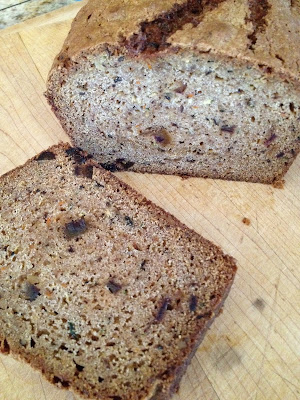These days, I know how much time it takes to prepare them, and just how far they (don't) go. I can certainly sympathize with Mom's efforts to feed a big family. But, I don't think there has ever been a time when I didn't wish for more than there were. These days, if I don't keep a close eye out, my husband will just polish off the whole of the remaining dumplings in the pan. Horrors! Because that means I won't get another one!
 |
| Apple Dumplings |
Okay, I might be exaggerating. A little. Well, a teensy bit, maybe. But I just love Apple Dumplings.
Rice Pudding
 |
| Coconut Milk and Saffron Rice Pudding |
To make my version of her rice pudding, Combine about 2½ to 3 cups of milk (or substitute a can of coconut milk, adding enough water to make the amount of liquid needed) in a medium saucepan with 3 tablespoons of minute tapioca and ½ cup of sugar. Let stand for a few minutes, then stir and combine with 2½ cups of leftover rice. Bring the mixture to boil, stirring and once boiling, reduce to simmer and cook for about 5 minutes, stirring constantly. Remove from heat and cool. Optional is adding in raisins, or cinnamon, or cinnamon stick while cooking. Add in vanilla, if desired, once off heat.
Potato Pancakes
 |
| Potato Pancakes |
But Apple Dumplings? Oh me, oh my!
 |
| Apple Dumplings |
Apple Dumplings
Makes 6 Dumplings
SYRUP:
1½ cups water
1½ cups granulated sugar
1 - 2 teaspoons ground cinnamon
½ teaspoon ground nutmeg (freshly grated is best)
2 tablespoons unsalted butter
DUMPLINGS:
pie dough recipe for double crust pie
6 medium sized baking apples, pared, cored
¼ cup granulated sugar
1 teaspoon cinnamon
½ teaspoon ground nutmeg
1 tablespoon unsalted butter, cut in 6 pieces
For the syrup: In a medium saucepan, combine the water, sugar, cinnamon and nutmeg and bring to a boil, ensuring the sugar is dissolved completely. Add the butter and set aside.
For the dumplings: Preheat oven to 350 degrees. Roll out the pie pastry as for pie, keeping it in a relatively rectangular shape. Cut the pastry into six (7 to 8-inch) squares. Set one apple onto each square.

In a small bowl, combine the ¼ cup granulated sugar, teaspoon of cinnamon and ½ teaspoon nutmeg, tossing well to evenly distribute the spices. Using a small spoon, place about 2 to 3 teaspoons of the cinnamon/sugar/nutmeg mixture into each core of the apples. Place one small pat of butter on top of the sugar mixture in each core. Have a small bowl of water at hand. Bring one corner of the pastry to the top of the apple (I usually start with a corner that may not be quite perfect). Dampen the top, then bring up the next corner of the dough and press into place. Repeat with the last two corners of the dough. Repeat this for the remaining 5 apples. If desired, cut little leaves out of the dough scraps and dampen the backs to adhere and decorate the tops of each dumpling. Set the dumplings, preferably not touching, into a 13 x 9 x 2-inch baking dish. Pour the syrup over all.
Bake the dumplings for approximately 45 minutes, or until the apples are tender and the pastry is golden. Serve the dumplings warm or cold, plain, with milk or cream, or with vanilla ice cream.
My passion is teaching people how to create a harmony of flavors with their cooking, and passing along my love and joy of food, both simple or exotic, plain or fancy. I continue my journey in ethnic and domestic cuisines, continuing my journey to explore diverse culinary experiences and hopefully to start you on a journey of your own. Join me also at A Harmony of Flavors on Facebook, and Pinterest.














